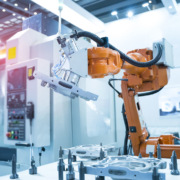What is manufacturing analytics
Benefits of manufacturing analytics Provides contextual awareness in real time. Give decision makers a competitive advantage by digitizing business, optimizing costs, improving quality, accelerating innovation, and redefining the customer experience. Manufacturing analytics is helping manufacturing companies increase the productivity and profitability of their operations by working through a large amount of data. By using machine learning models and data visualization tools, manufacturers can gain insight into their data, optimize their processes, and maximize performance.
The manufacturing analytics process
The goal is to turn the data that is collected into insight that can then be turned into actions that positively affect the business. The process begins with identifying business use cases. Most manufacturers have similar goals that they are trying to achieve, including improving product quality and reliability, increasing their revenue, and creating an efficient factory. After first identifying the business use cases, the next step in is to gather the data. There is data from vendors, processes, teams, sales, and many other types of data. In addition, it is necessary to confront this data, join it, merge it, clean it, filter it if necessary, and prepare it for analysis. Once that is done, you can begin to automate processes to look for signs such as defects, warranty claims, downtime or performance in the data. After you have done an initial exploration, you can decide on standard ways you want to see things. Real-time monitoring applications and dashboards can be created that can be reused with new types of data. Beyond basic dashboards, advanced analysis applications can be used to create models for further analysis based on predictions. Models can be used to check or predict production volumes, equipment breakdowns, and product quality. Once a good predictive model has been achieved, alerts can be sent, for example through the company’s mobile devices.









